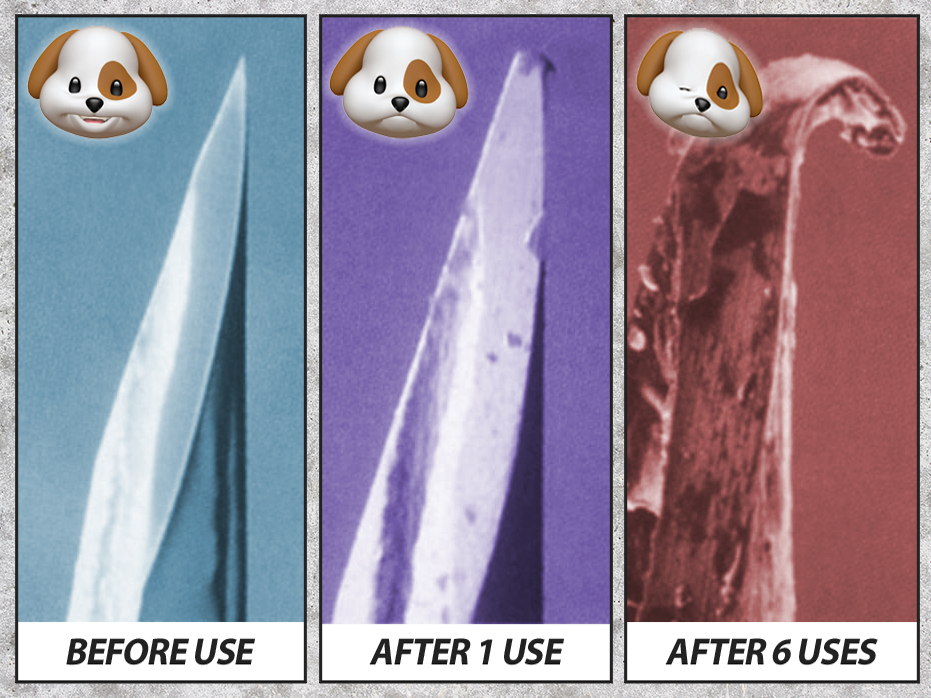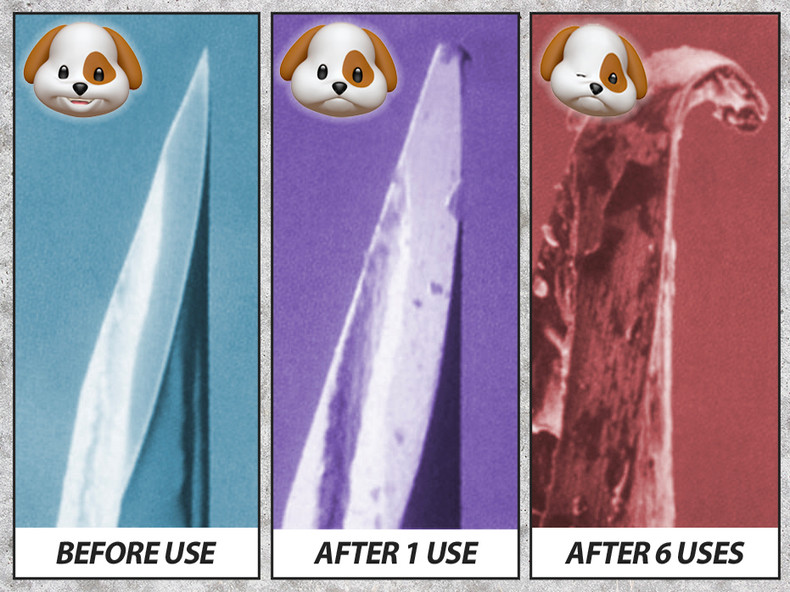Let me just say that until recently, I was not clear what the numbers on the cover of the syringe box meant. I just took my picture into Walmart and said, “I need a box of these syringes please.” So, let’s “go to school” with our insulin syringe guide for dogs…
The most important part of the syringe that you use is this: Is it the correct syringe for the insulin that I use. Look back to the blog post about Insulin and Syringes for My Diabetic Dog. For Novolin N, you MUST use a U-100 syringe. For Vetsulin/Caninsulin you MUST use a U-40 syringe.
ALSO NOTE: Check the syringe to be SURE that the first mark is at the very end of the barrel. Many syringes in a box of 100 could be mis-marked… This is VERY important especially if you have a small dog and your pup gets a small dose. An additional ¼ - ½ dose can cause you all kinds of problems. Make sure that you buy syringes with half unit markings as it will lead to more consistency throughout your journey with this disease. It’s not hard to find U-100 syringes with half unit markings, but finding U-40 syringes with half unit markings has been a challenge… Until NOW!
Why should we know what these numbers mean? Understanding the particulars of the syringes that you use, and what others are available, may mean ease of use for you and more comfort for your dog. Well worth the time when put that way I’d say. We hope to answer all your questions in our guide to insulin syringes for dogs. Read on to find out more…
Let’s start with volume:
| U-100 Syringe Volume | |
| 0.3cc | Holds up to 30 units of insulin |
| 0.5cc | Holds up to 50 units of insulin |
| 1.0cc | Holds up to 100 units of insulin |
| U-40 Syringe Volume | |
| 0.3cc | Holds up to 12 units of insulin |
| 0.5cc | Holds up to 20 units of insulin |
| 1 cc | Holds up to 40 units of insulin |
If you have a small dog or even a medium sized dog, you likely will never draw even close to 30 units for an injection, so you’ll always want the 0.3cc syringe. If you have a large dog and are drawing 20 units or more, you’ll likely want the 0.5cc syringe for ease of use. We will be talking on Wednesday about how to do a proper injection and part of the process is how to fill your syringe. You need some extra “wiggle room” in your syringe so having the correct volume on your syringe is important.
Gauge:
Here’s a confusing (confusing for me anyway) thing to note, the higher the number, the thinner and more comfortable the needle. The gauge is the thickness of the needle… the thinner the needle, the more comfortable for your pup. I know that I just repeated myself there, but this point is worth repeating. It can be especially important when looking at the needle gauge for small dogs. Unless you have a very thick-skinned dog, I’d imagine that a 31 gauge needle is the most common size used on our pups.
Lancets:
Now for lancets, because we use them for testing, you may find that you need a lower gauge (thicker point) lancet to get a good blood drop. The higher the number, the thinner or smaller the lancet and the lower the number, the thicker the lancet is. I tested on the inside of the upper lip, so I used a higher gauge lancet because it was very easy to get a sample in that location. Many that test on other parts of the dogs body (elbow callus, carpal pad, just above the tail in a shaved spot) likely will need a lower gauge lancet to make getting a blood drop easier. Please, please, please only use the lancet once. With every use, the lancet gets duller and more ragged. Lancets are the least expensive part of this disease, and should only be used one time, then thrown away.
Needle length:
Being that insulin is given subcutaneously (into the fatty tissue just below the skin), the length of the needle on your syringe will be important. Paying attention to the needle size for your dog’s injection can save a lot of time and discomfort for your furry friend. If you have a small dog with a low dose of insulin, the shorter needle length (5/16” (8mm) or a 15/64” 6mm) is probably best for you. If you have a large breed dog with a larger dose, you may need the longer needles (1/2” or 12.7mm) to properly administer your insulin.

When my Max was first diagnosed, I was given the 29G, ½”, 0.3cc syringes by the vet. What does that mean? It was a thicker needle (29G), with a ½” long needle and it held 30 units of insulin. The longer needle kind of freaked me out as I had never given an injection before and I was afraid that I was going to inject the insulin too deep or I was going to “hit” something that I shouldn’t. The next time I went to buy syringes from the vet, I was given 29G, ½”, 0.5cc that means that the gauge was still thicker than it needed to be (29G), the needle length was still freaking me out (1/2”) and they held 50 units! The unit increments went up by 2 units at a time… How was I supposed to give 5 units?!? When I finally started buying my syringes away from the vet, I was able to get the perfect ones for us. My ideal syringe was 31G, 6mm, 0.3cc which translates to thin needle (31G), short in length (6mm or 15/64”) and holds 30 units with half unit markings. Half unit markings are a lifesaver while you are trying to find your perfect dose as we always want to be consistent with insulin. It is easy to find the U-100 syringes with half unit markings and now it’s easy to find U-40 syringes with half unit markings.
One final note… Please don’t reuse your lancets or syringes, they are disposable. Single use syringes and lancets, if you use them more than once, the coating comes off of the needle and the needle becomes more and more dull and begins to curl, increasing the risk of infection. That means one thing... OUCH! There is also the possibility that you will contaminate your insulin if you reuse a syringe.
I hope that this guide for insulin syringes for dogs helps you understand what those numbers on the outside of the syringe box mean and will help you find the perfect syringe for your journey with Canine Diabetes.
If you have any thoughts or ideas for topics that you’d like to see covered here, please feel free to comment below or send me an email at ecommerce@pharmasupply.com.
As always, please “like” this blog post or any of the others that have helped you or just refreshed your memory. Look for new posts every Monday, Wednesday and Friday!
Until next time…

